– MAKING SPACE –
to Create and Make
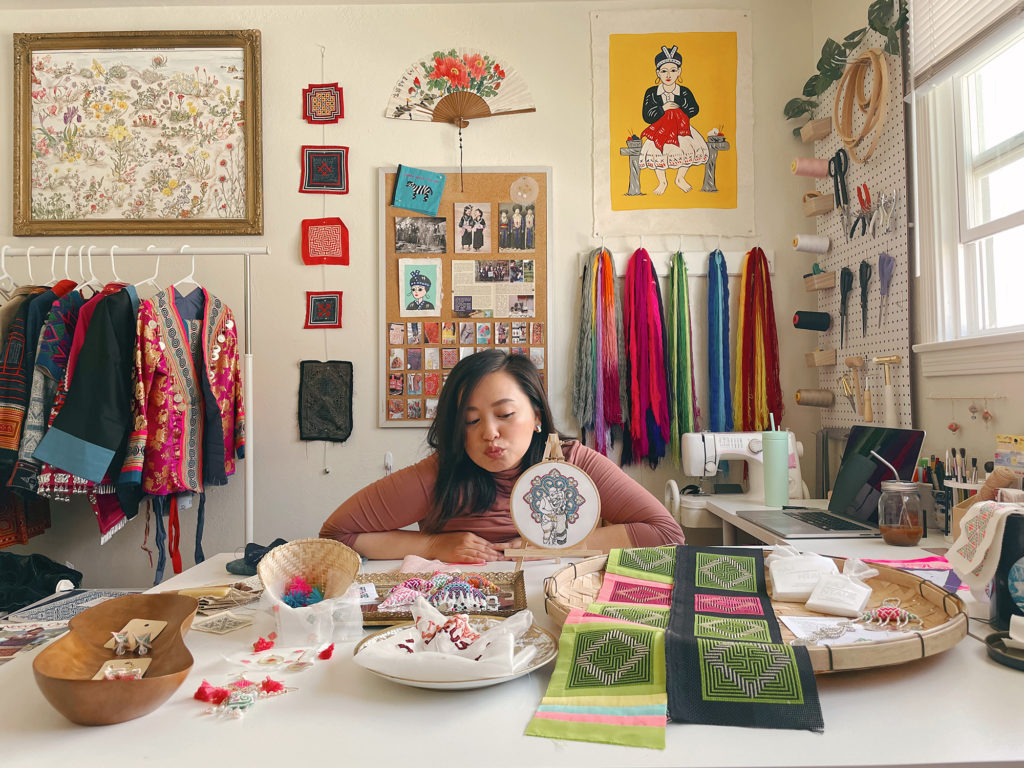
I’m a firm believer in the idea that people’s lives are shaped by their environment.
That’s why within these last few months I’ve worked hard at putting together my own office space + craft room! A space that not only houses my collection of paj ntaub and Hmong textiles, but one that also helps me become the creative force in my own life.
You see, my journey with paj ntaub hasn’t always been linear. Although I discovered my love of Hmong textiles over nine years ago in college, w![]() hen I entered the “real world” I had no idea how I would find a profession in it. So I took on regular 9-to-5 jobs and, slowly but surely, it started to feel like all of the work I had put into uncovering Hmong culture through clothing had been for nothing!
hen I entered the “real world” I had no idea how I would find a profession in it. So I took on regular 9-to-5 jobs and, slowly but surely, it started to feel like all of the work I had put into uncovering Hmong culture through clothing had been for nothing!
Regardless, I was committed to paj ntaub and worked hard at trying to establish a path in it. I found myself in-and-out of jobs that danced around “culture” or “cloth,” while slowly hacking away at big opportunities like curating my own exhibits, working abroad, hosting workshops, or going on research trips. Although these side gigs were major successes for me, at the end of it all I still felt pretty lost. Could I make a solid living out of this? How was I going to find a career in paj ntaub?
It wouldn’t be until I came across The Path of Least Resistance that it dawned on me why I felt so stuck! I wasn’t moving forward. I had merely been oscillating between two paths; struggling because of the underlying structures in my life that were pushing and pulling me in different directions.
It’s these hidden underlying structures in our lives that determine our behaviors along with the decisions we make which follow the path of least resistance. And all energy moves along the path of least resistance which refers to “the easiest course of action.” To better understand what this means, we can look at different kinds of phenomenons in nature like how water flows along a riverbed: water comes out of a spring and flows down, trickling over rocks, under gravel, and along paths that are the easiest for it to follow — following the path of least resistance and extending the least amount of energy. Overtime, this path turns itself into a riverbed which in turn becomes an underlying structure dictating where and how the water will continue to flow.
Like water, the decisions and choices we make in our lives also follow a path of least resistance — shaped and influenced by an underlying riverbed or structure that has been passed down to us, inherited, or picked up. If we want to get somewhere that doesn’t align with how these structures shape our life direction, then we have to be more mindful of what they look like and take the initiative to change their course from time to time.
While I wanted to create a career doing things that I loved like researching, curating, making, and sharing my love of Hmong textiles with others, I was having a hard time doing this because of the many underlying structures in my life pushing me towards a more conventional career path. To become the creative force in my own life I needed to make a decision. And, if we are following the suggestions put out by Robert Fritz in the book, then the best way to do that was to establish a vision from here to there that could set the stage for “structural tension” instead of disarray. Essentially, ironing out all the kinks to create a straight line that would allow me to walk from point A to point B — my current reality and where I wanted to be.
So about a year ago I made a commitment to start focusing on paj ntaub with an end goal in mind. It’s become really clear to me since then that what I want to do with Hmong textiles — the things I’ve already been doing — is to establish a space that could really give paj ntaub and its makers a chance to shine inside a studio or through some type of establishment that would also feature handmade products, educational workshops, and special exhibits.
Although a physical space is the ultimate goal, I figured starting with a digital space here and setting up my own personal craft room would also be foundational in helping me lay out these new structures in my life to keep me en route.
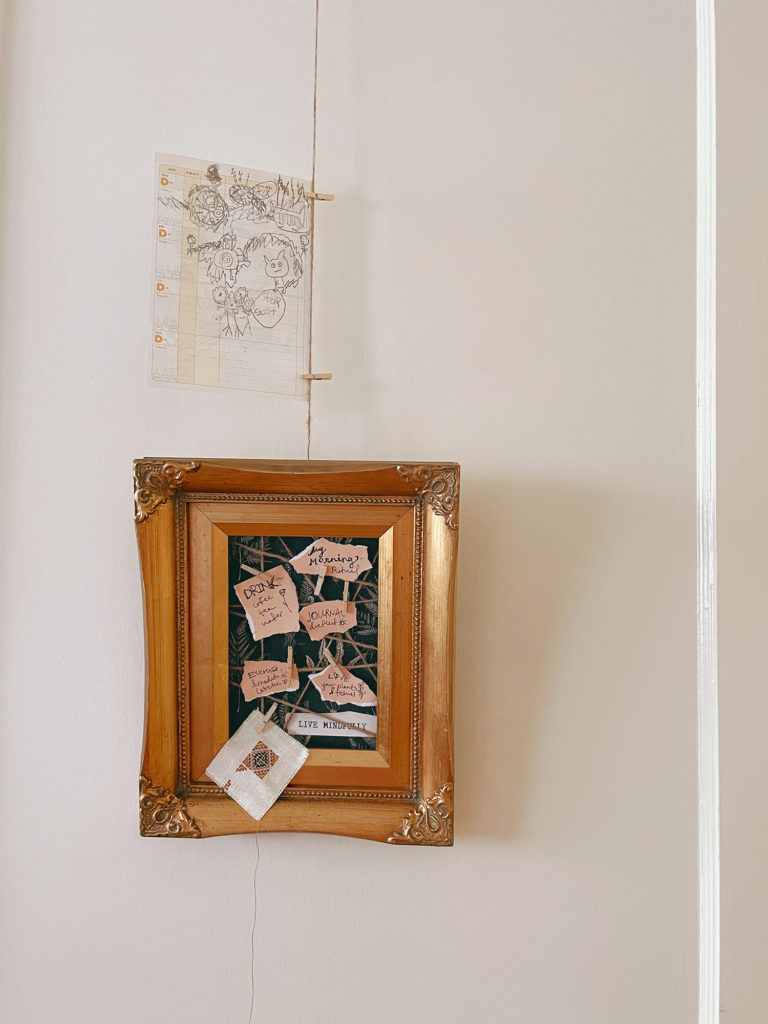
There were some specific things I wanted my craft room to have:
- Ample desk space (lots of it!)
- An element of “display” to tinker around with “exhibiting,
- An organizational system for my supplies and projects
- A mood board that could keep me inspired
Although I spent a lot of time eyeing big beautiful desks at Ikea, I quickly realized I wasn’t going to get my hands on any items that were chronically out-of-stock. So, after a lot of browsing, I came up with an idea to buy the table tops separately which I then paired with Ikea table legs! This actually ended up working out great because it saved me a ton of money and gives me a lot of versatility in how I can work in the room.
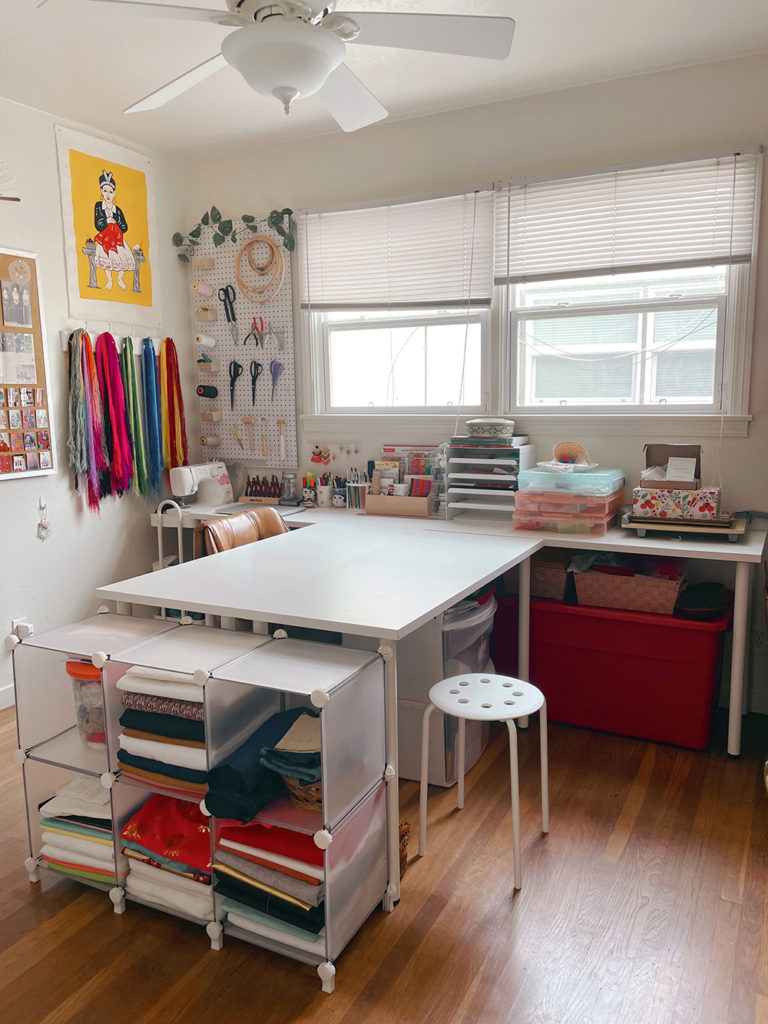
I love the “T” shaped formation I settled with, which I think is really aesthetic and practical. I like how it gives me the ability to create different work areas in a small space, also opening up the room to accommodate more than one person.
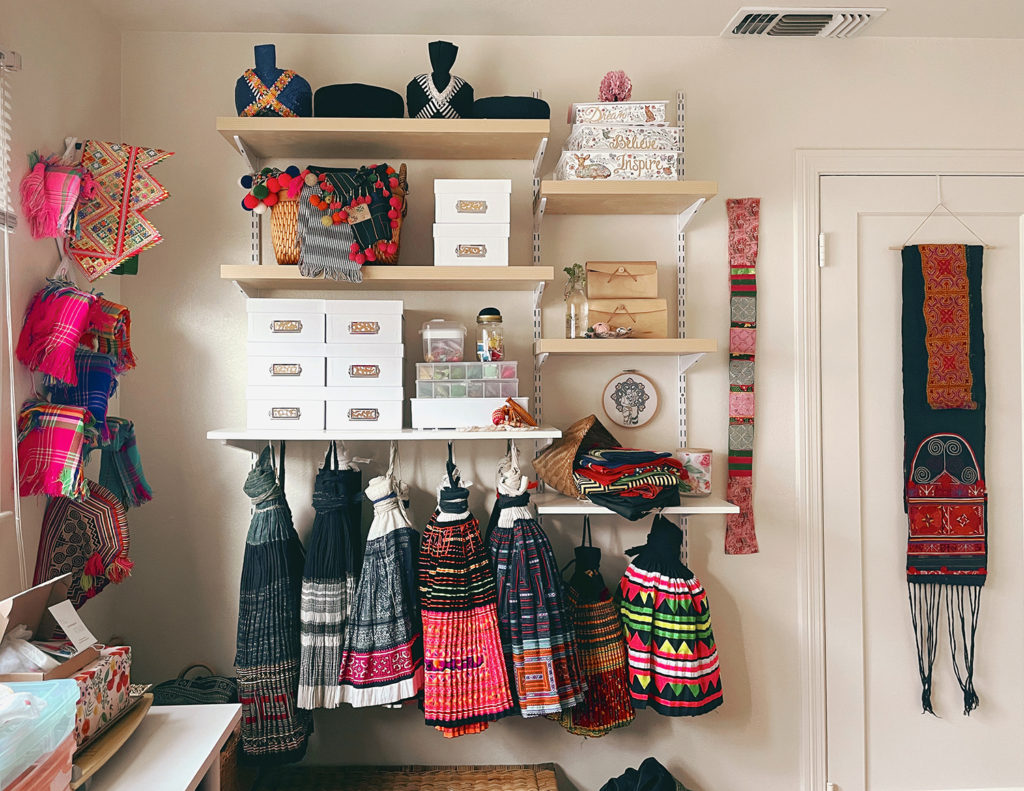
Because I accumulated quite a lot of Hmong textiles during my travels in Southeast Asia, I really wanted to have them out and easily accessible. Growing up, like in many Hmong families, my mom stored our Hmong clothes away into bins and suitcases. After seeing how a friend I met in Vietnam had set up a display room for her collection pieces, the idea of displaying paj ntaub became stuck in my head for a few years.
To do this, I decided to re-use an old track shelf that I made some time ago from up-cycling an Ikea desk I found online. I think this track shelf is a perfect way to both display my paj ntaub pieces and store ongoing projects and craft materials, without needing to shuffle through clunky boxes or suitcases.
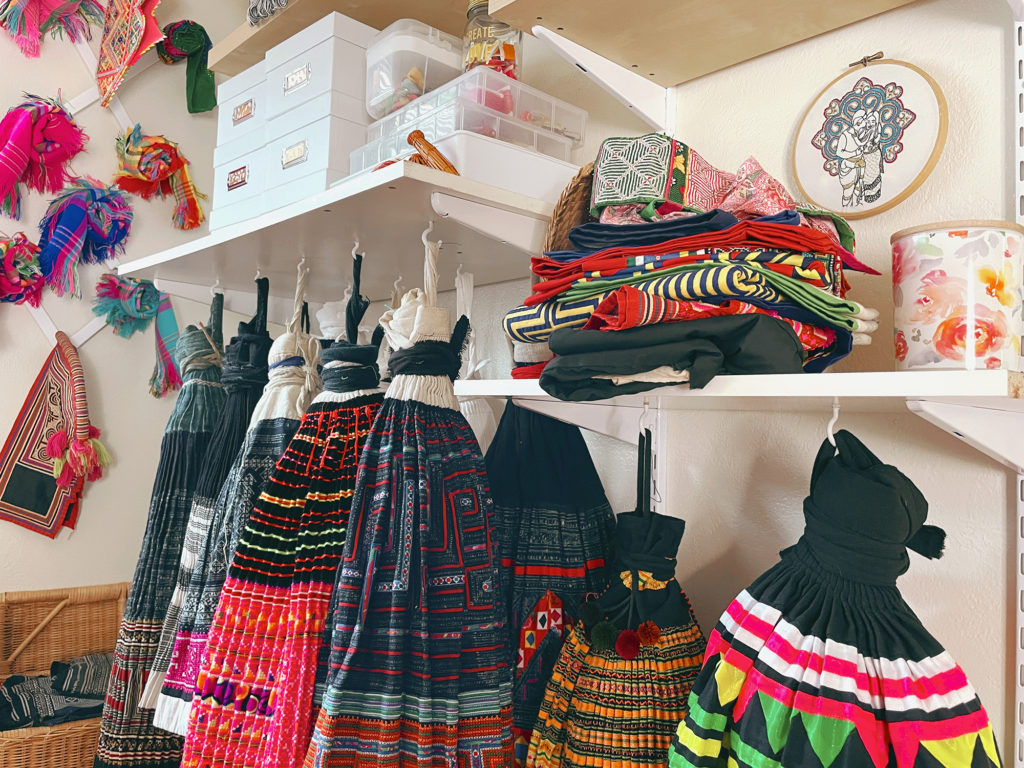
Hmong skirts are generally rolled up and tied to be stored. I thought I would use this same method of tying them up but instead hang them. To do this I screwed in small hangers to the bottom panels of the shelves. They’re a little more squished than I’d like them to be but it beats having them piled on top of each other and stuffed away.
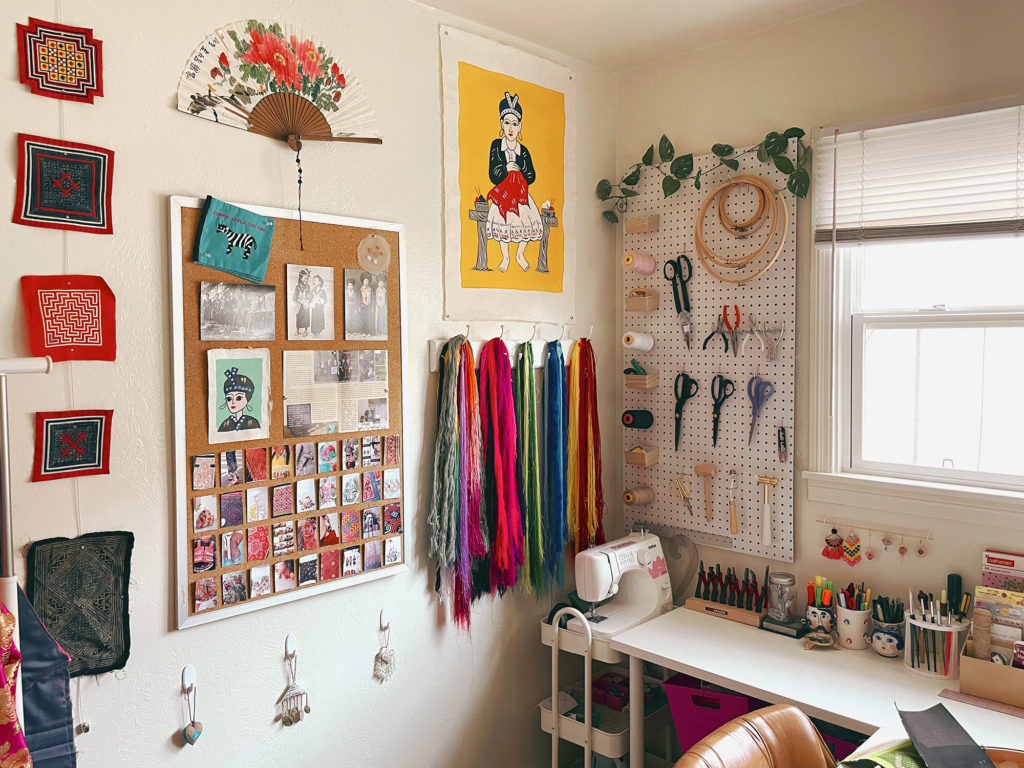
A craft room wouldn’t be complete without a peg board! I recently just completed a Sewn Product Manufacturing course (which I really recommend) and received a bunch of free industrial sewing tools! So I was inspired to store and display these tools up in this corner along with a variety of other sewing, embroidery, and jewelry making supplies I have.
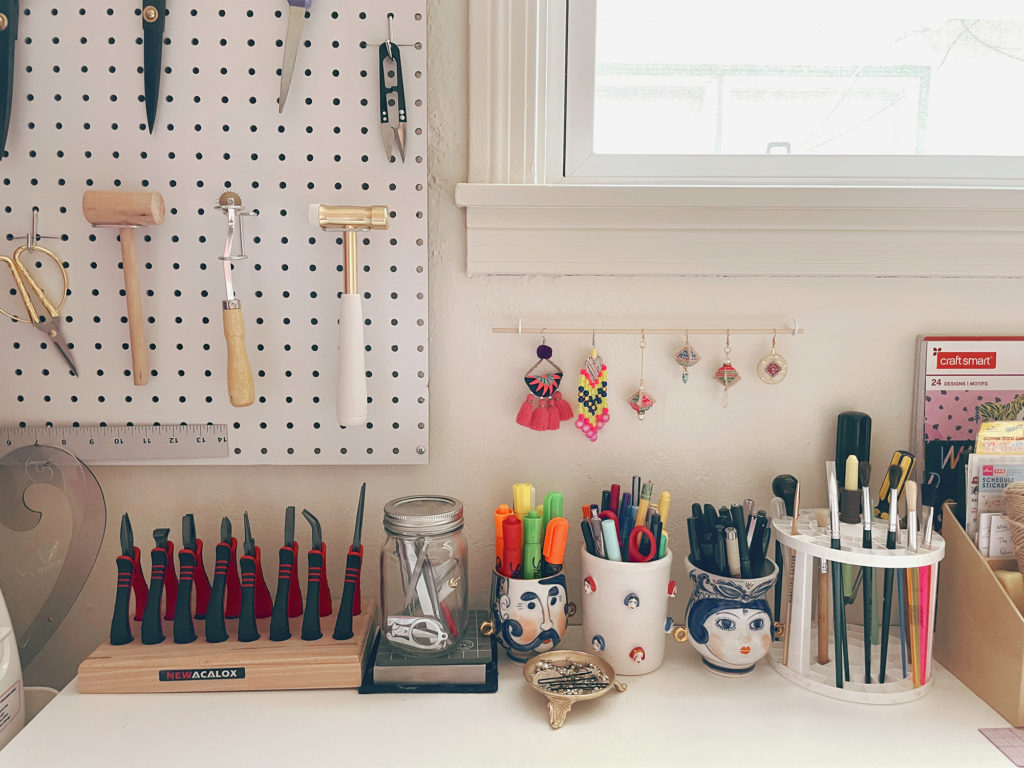
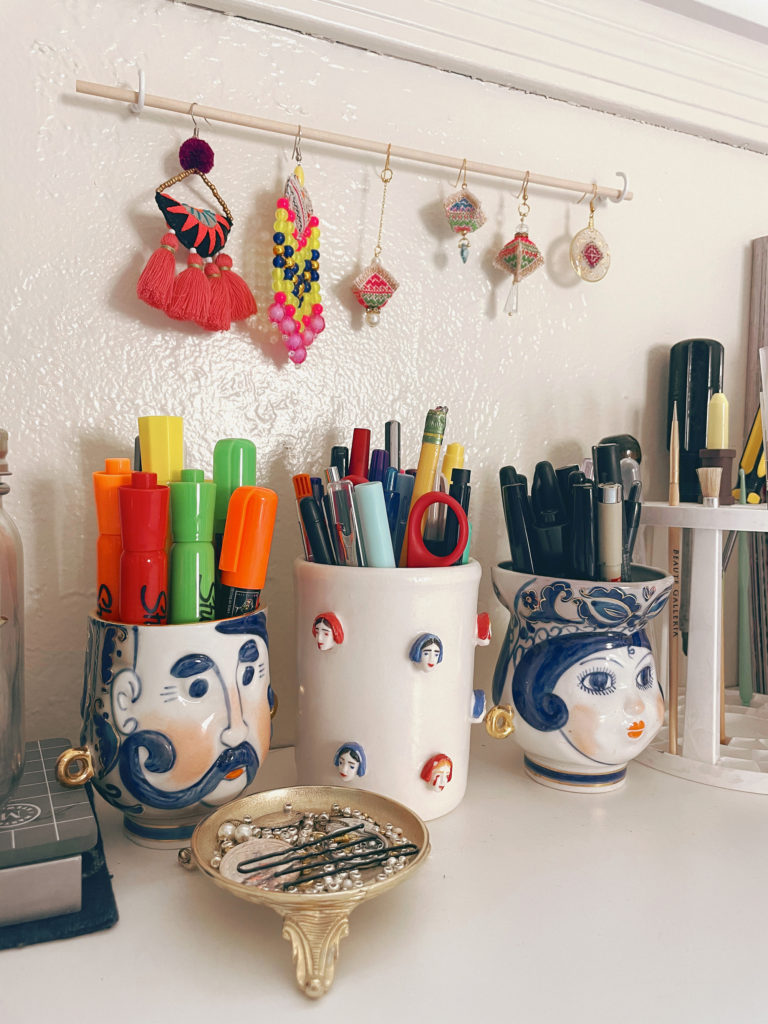
Like the cute Zombie-Mary cup? Check out my college roommate, Sparnicht Ceramics‘ work! I love her art and most of the cups you’ll see on here are made by her.
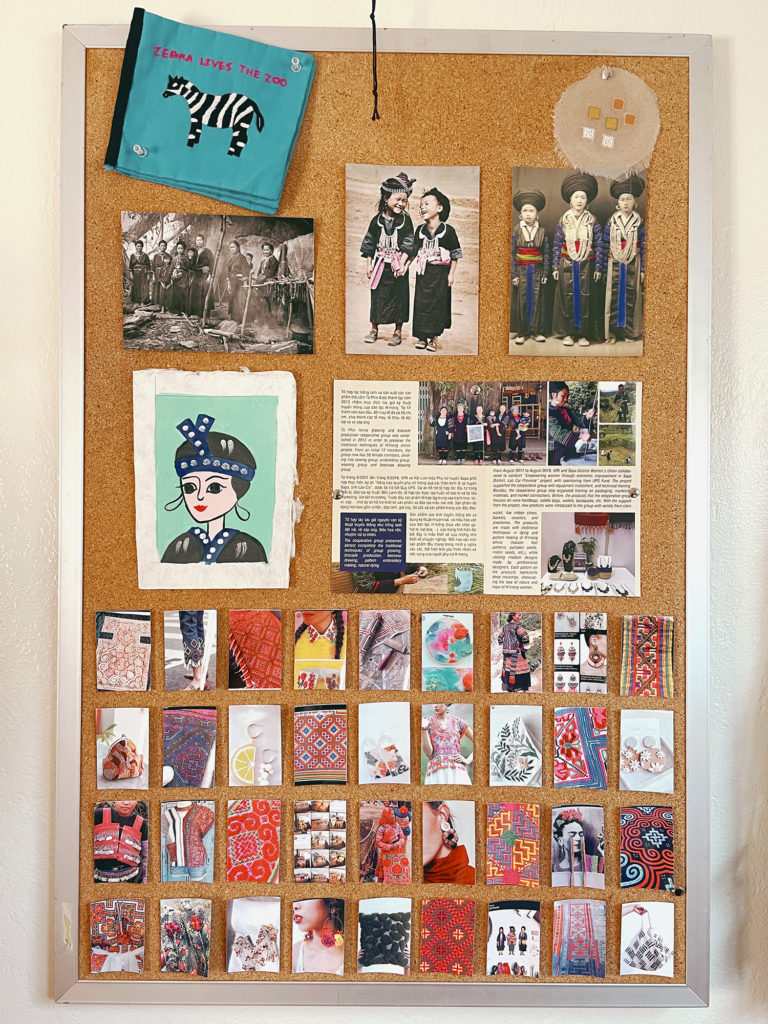
Art, paper, and textile pieces that I’ve picked up in my travels throughout “Hmong lands,” from Hmong-owned social enterprises, and during my time putting on grassroots exhibits like HmongStory 40. Blending my life experiences into bits and pieces of what are considered “the old” and “the new” is where I find a lot of my inspiration.

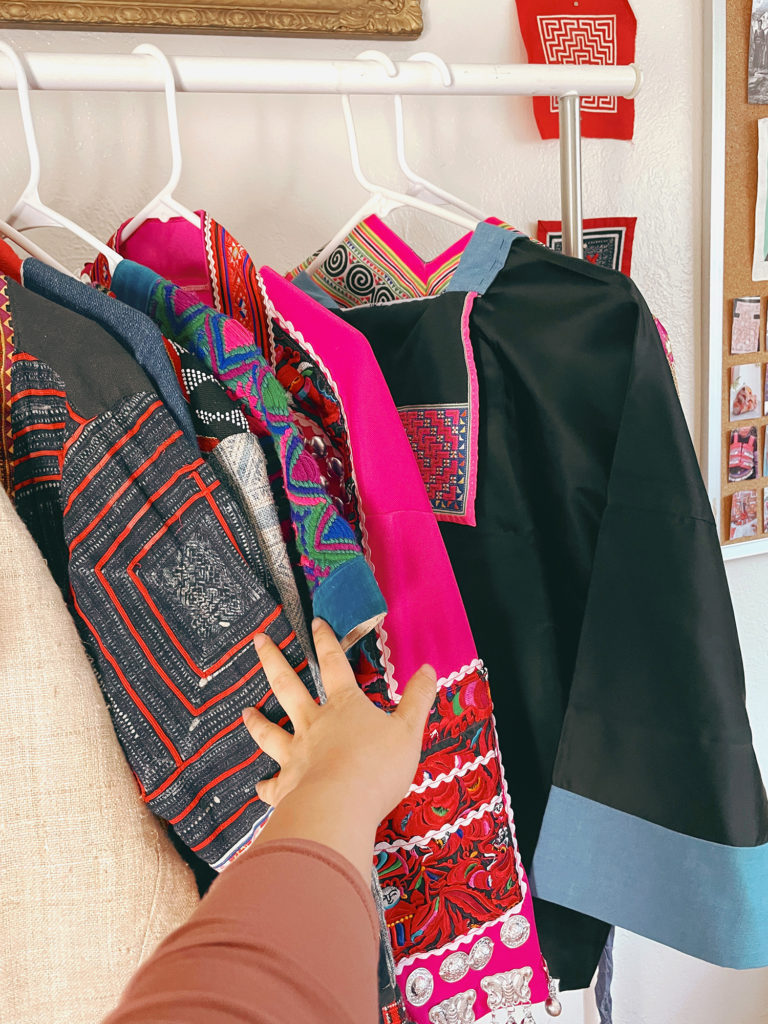
Look at this magnificent piece that my pog or paternal grandmother made. SHE IS MY INSPIRATION. The skills, craftsmanship, and artistry behind this dab tsho is just magnificent. Oh, my heart!
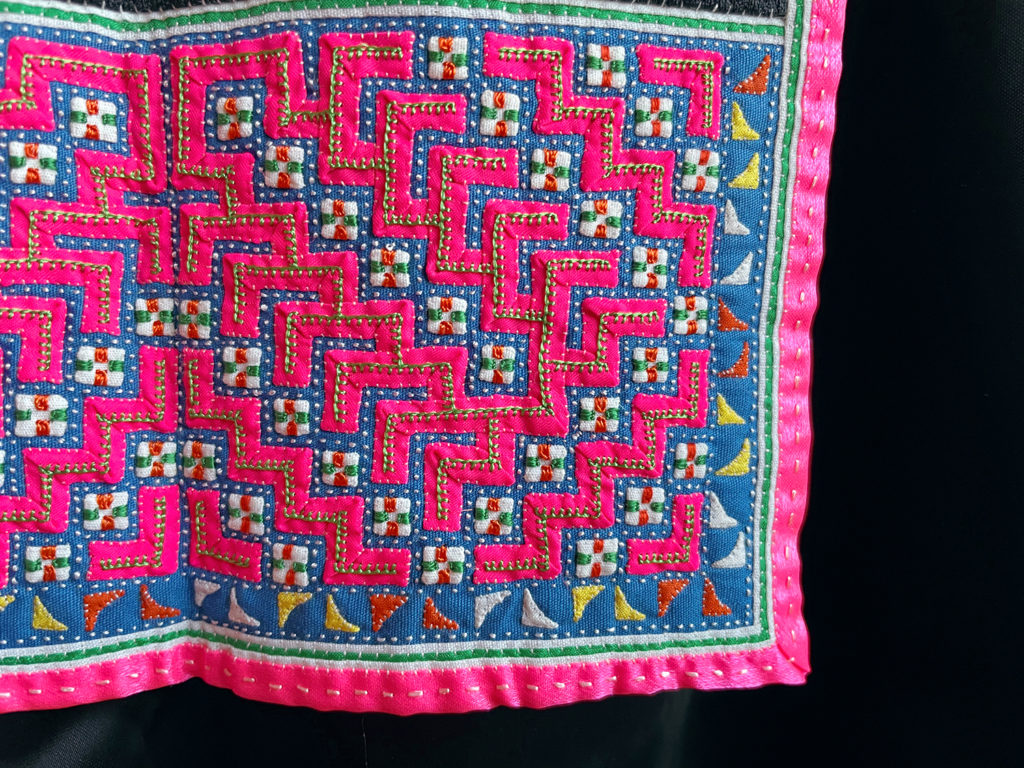
Now that my room’s set-up I’m really excited about expanding my own practice and craft in paj ntaub! Stay tuned for some earrings we’ll finally be sharing this week which will be going up on the Etsy shop.
Here’s to the big kick-off with Culture through Cloth!
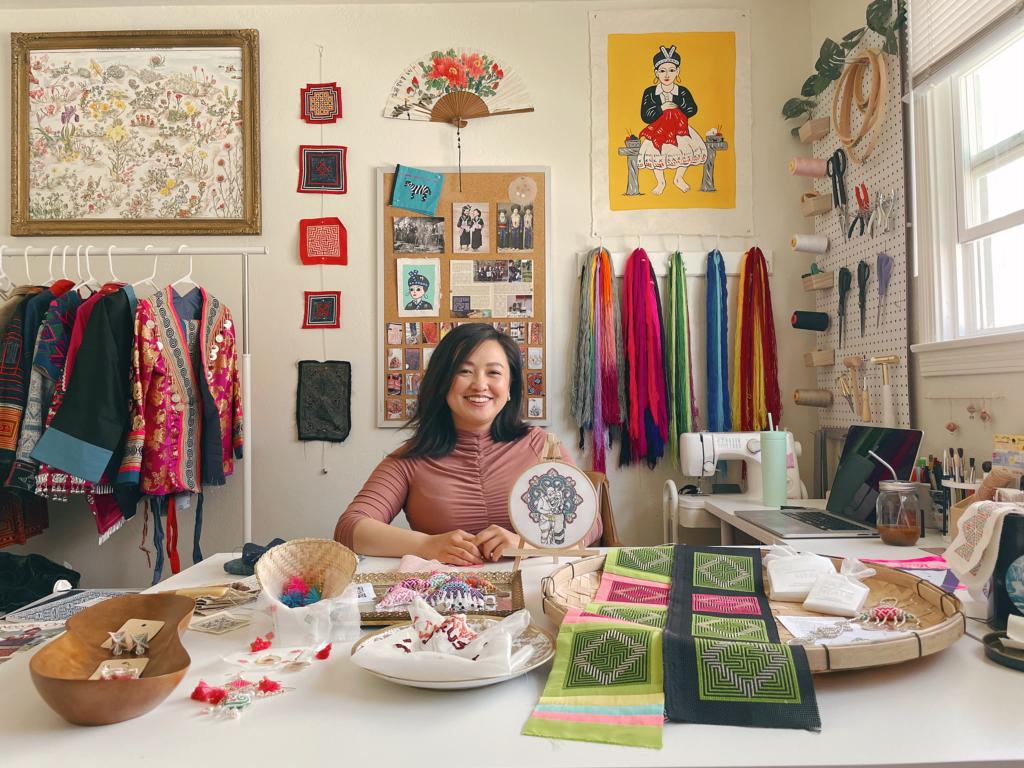
Well done Pachia
Thank you for sharing your story of how you designed and initiated your space to create and embrace our Hmong textiles. I, too, am a lover of textiles, having studied fashion. Currently, working on weaving cloth. You have inspired me to make space, not just in my heart, but also physically. Thank you!
Hello,
I was so excited to see you on Facebook! I love what you are doing and the business you have created! I have been teaching ESL for over 25 years and I remember the wave of Hmong refugees that came from the camps in Thailand. My Hmong students have always had a special place in my heart. I am so amazed at how far they have come in such a short time.
I am writing to you because I would like to ask you if you would consider being a guest speaker for our “People and Culture Days” event at Sierra College. The event will be held in October 19 and 21 in October, 2021. It will be virtual. Would you be willing to zoom with our faculty and students for one hour on one of those dates? You could talk about how you use cloth to tell stories about your culture and how you create art to preserve your culture. You could talk about how and why you got started. I think many of our immigrant and refugee students would love to hear your story.
I really look forward to hearing from you.
Sincerely,
Julie
916-719-9015
Hi Julie! This would be amazing! I’ve responded to you via Instagram as well. Let’s connect!